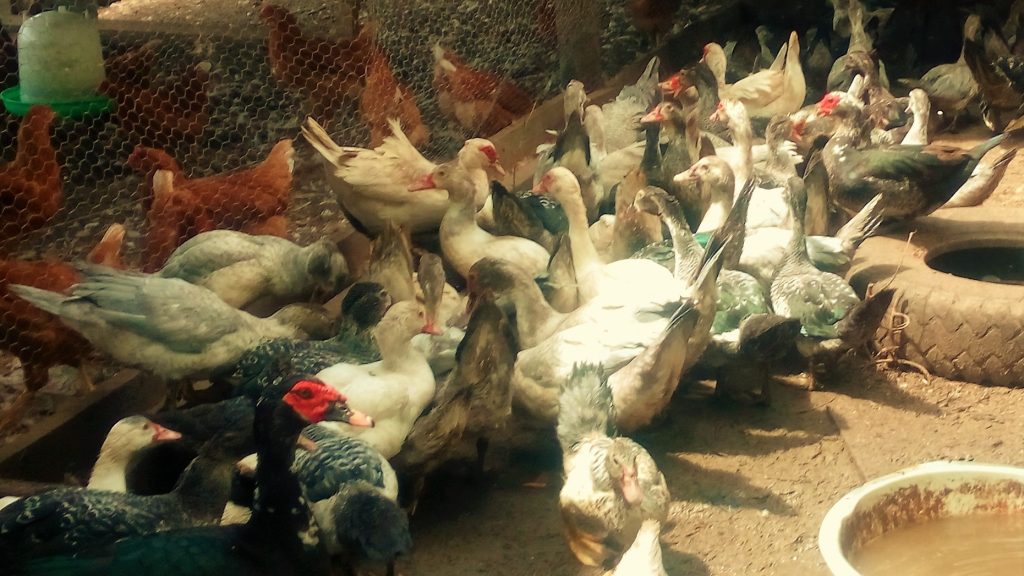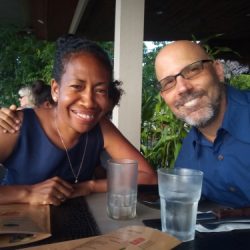
Introduction
We are living in an incredibly special time. Advances in technology and environmental protection are made at an unbelievable pace. I might not agree with every technological advance, but they are nonetheless fascinating. In the same way, I might not agree with all positions and arguments for environmental protection and climate change, but it is fascinating to see how the world is becoming more and more aware of it and that is, overall, a good thing. Now, here’s the challenge I see. The technological advances we are making to achieve food and water security also encourage the idea that we do not need functioning ecosystems for us to achieve said food and water security. To put it in an extreme way, we’re achieving food and water security, the survival of mankind, seemingly without needing planet earth.
A New Challenge Needs a New Approach
During my years living and working in developing nations, I’ve gained some insights into issues such as food security and access to safe water. Areas of great concern and obviously directly linked to technology and the climate change debate. And maybe like never before, humanity finds itself in a position to be able and motivated enough to find solutions to these areas. However, I see us creating a new challenge as we use never-before seen technologies to find solutions to our world’s crises, be it food, water, housing or environment.
Today, we are looking at urban vertical farms (Despommier, 2019), where vegetables are grown indoors, without soil, without natural light, but yielding great results. Real meat is grown in labs (Waltz, 2021), like, real chicken breast meat, that’s never been part of a chicken. Again, I’m not sure I agree with all these advances, I might go vegetarian before I eat lab meat, but the fact that we have found technologies to make such things possible is fascinating and opens huge possibilities. Same with water purification and desalination methods, where it does not matter how polluted the water is to begin with, the process results in safe drinking water. It is quite amazing.
Most of these technological advances are made in urban mega centres. Singapore, Dubai, Tokyo, L.A., London etc. There are many very practical reasons for why that is. Let’s summarize it by saying it is the coming together of human and financial resources. So, we have children in schools in these big cities, growing up mostly disconnected from ecosystems that yield food and clean water, or disconnected from the challenges of providing housing. Sure, they learn that milk comes from cows, seeds grow into plants that then yield fruit, but they don’t have the opportunity to see it happen for themselves, even less to take part in making it happen. They also never have to experience the existential need for appropriate housing as housing will for many be a thing that’s taken for granted. At the same time, they learn about all these breakthrough technologies and how their generation will have to tackle all these major challenges in the world. Now, you put the two things together, the technological advances that, inadvertently, encourage not needing functioning ecosystems to sustain life, and the disconnection between everyday life and the ecosystems that sustain it, that children and teenagers in the world’s leading urban centres grow up with. What I fear could happen is a shift in mindset from “we need to protect our planet” towards “we don’t need our planet” within the next generation or two. A bit of apocalyptic sci-fi thinking you might say. Maybe. But no matter how advanced the technologies will get, people cannot live meaningful lives without functioning ecosystems, nature, planet earth.
Children grow up without ever experiencing such things like planting a seed and watching it germinate, then take care of it and harvest its fruit and turning that fruit into, let’s say, jam. Or looking after some animals, milking a goat, turning that milk into cheese, feeding some chickens and collecting their eggs. But when they grow up, they are expected to solve the worlds emergencies in food, water and environment and the resulting crises and conflicts. The disconnect is real and the challenge huge. Education needs to re-establish this connection. Maybe not primarily because of the skills learnt during these activities, those will be relevant for some, but because of the heart connection it creates to what sustains their everyday life – food, water, an environment to live in; the exact things they are expected to find solutions for once they grow up. So, what can we do?
We must create opportunities for our children to connect with earth, nature, and the ecosystems that produce their food and water, and air to breathe and place to live, opportunities to take part in the processes to produce sustainable food, clean water and air, and adequate housing, so that they have a firm foundation, a real connection to the challenges at hand gained from first hand experiences, from which they will take humanity to never before seen levels of development and stewardship. How are we going to do that? Most children learn best, if the learning is experiential and hands-on. Schools that dare to incorporate such learning see dramatic and positive changes in their students (Kaldi et al., 2011).
Every school, to some level or another, should incorporate agriculture, farming and production of value-added products. I think schools should do whatever it takes, to integrate a farm or homestead into their school program (Jolly et al., 2004), a place where children can see that food doesn’t just appear at the supermarket, where they can gain hands-on experience with growing food, both plants and animals and learn about what ecosystems are needed. Where they can experience turning primary produce into value-added products and how to use them. A place where they learn to use appropriate technologies in responsible ways. An educational program with a holistic approach that combines subjects such as agriculture, technology, home economics, crafts, business and even arts (Jaatinen & Lindfors, 2019).
Conclusion
We need our planet, of course, and our ecosystems are under an enormous pressure, but at the same time our advances in technology bring new solutions within reach. The biggest challenge is preparing our most precious resource, our children, for the task at hand. We need to create an education that ensures creating a heart connection between the world’s needs and their technological knowledge and skills. It will be firmly rooted in their worldview. A homestead program will help children for their everyday life, but it will also help them succeed in careers like food and water technology, policy making, industrial production, community development, international diplomacy and many others. And what I mean by succeed is not getting the jobs, promotions, and high salaries, but the fact that they will achieve the breakthroughs our world needs. And I think the time to act on this is now.
References
Despommier, D. (2019, September 24). Vertical farms, building a viable indoor farming model for cities. https://journals.openedition.org/factsreports/5737
Jaatinen, J. & Lindfors, E. (2019). Makerspaces for Pedagogical Innovation Processes: How Finnish Comprehensive Schools Create Space for Makers. Design and Technology Education, 24(2). http://files.eric.ed.gov/fulltext/EJ1221415.pdf
Jolly, L., Krogh, E., Nergaard, T., Parow, K. and Verstad, B. (2004). The Farm as a Pedagogical Resource: Background for and evaluation of the co-operation between agriculture and primary school in the county of Nord-Trondelag, Norway. FARMING AND RURAL SYSTEMS RESAERCH AND EXTENSION, European Farming and Society in Search of a New Social Contract – Learning to Manage Change, 633-644
Kaldi, S., Filippatou, D., & Govaris, C. (2011). Project-based learning in primary schools: effects on pupils’ learning and attitudes. Education 3-13, 39(1), 35–47. https://doi.org/10.1080/03004270903179538
Waltz, E. (2021, March 1). Club-goers take first bites of lab-made chicken. Document – Gale OneFile: Health and Medicine. https://go.gale.com/ps/i.do?id=GALE%7CA657382793&sid=googleScholar&v=2.1&it=r&linkaccess=abs&issn=10870156&p=HRCA&sw=w&userGroupName=anon%7E9df9b19

